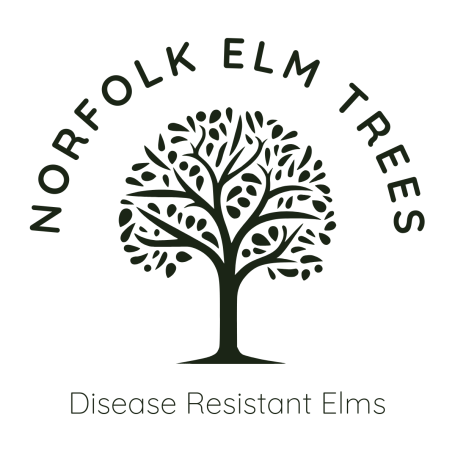SIGN UP TO BE NOTIFIED OF NEW STOCK
Norfolk's dedicated supplier of Disease Resistant Elm Trees
Welcome to Norfolk Elm Trees. We are passionate about sourcing and supplying disease resistant elm trees (Ulmus x) to homes and businesses in Norfolk and the surrounding counties.
Beautiful Ulmus
Elm trees were once a majestic feature of Britain's landscape and their regal appearance and graceful branches were commonplace on urban and rural landscapes. No other tree has the size, form and growth rate of the elm and no other tree holds such affection in the hearts of those of us who are old enough to remember them. This is why we founded Norfolk Elm Trees.
Norfolk Elm Trees is a dedicated supplier of disease resistant species of elm. We love all trees, but elm holds a special place in our hearts. Our goal each year is to source and supply the most spectacular disease resistant elm trees so that Ulmus x can regain its magnificent place on Britain's landscape.
WhAT is a disease Resistant Elm Tree?
Inoculum trials testing the impact of the Dutch Elm Disease (DED) Pathogen
We supply elm trees that are 'resistant' to Dutch elm disease (DED).
In order for an elm tree to qualify as disease resistant, cuttings are taken from a cultivar and propagated for two to three years before being inoculated with a mix of pathogens including the Dutch elm disease pathogens, O. ulmi and O. novo-ulmi.
The DED pathogen is introduced to trial samples, by placing a dose of inoculum into a cut in the tree's trunk during its accelerated growth phase in May. The infected trees are then assessed for wilting and defoliation a month later and dieback a year later.
In order for an elm cultivar to qualify as disease resistant, inoculation trials need to show very low levels of wilting, defoliation and dieback.
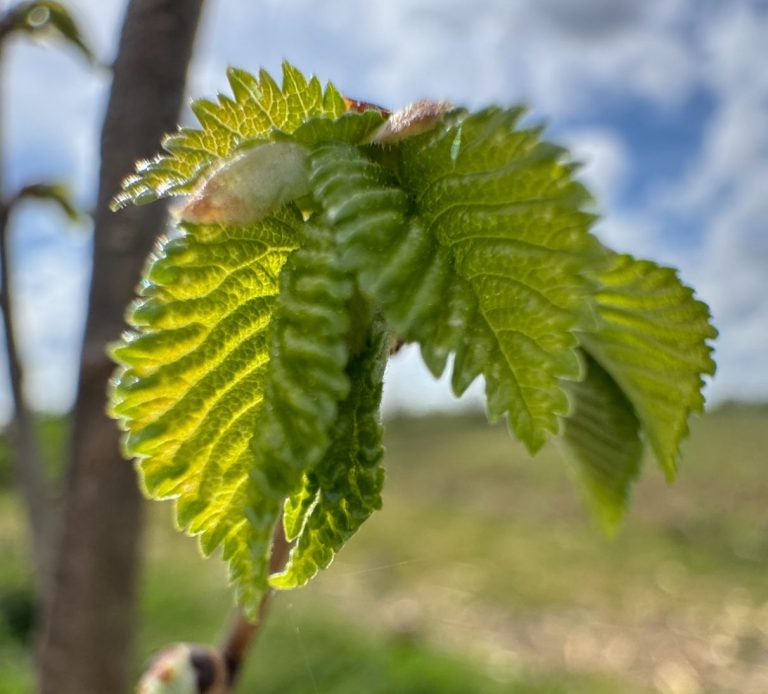
Spring Leaf burst
We are always delighted to witness the first of the spring leaf burst in our elm nursery. This year it was a beautiful elm called Ulmus Ademuz that won the race with a plethora of leaves bursting just before Easter.

Ulmus Minor 'Ademuz'
Ademuz, discovered in 1996, is a pure Spanish ulmus minor (field elm) of which the English elm is a distinct variety.
Ademuz is considered to be one of the most attractive and resistant elm cultivars with leaf burst happening in late April. The tree is usually monopodial until to a height of five meters and has a medium foliar density.
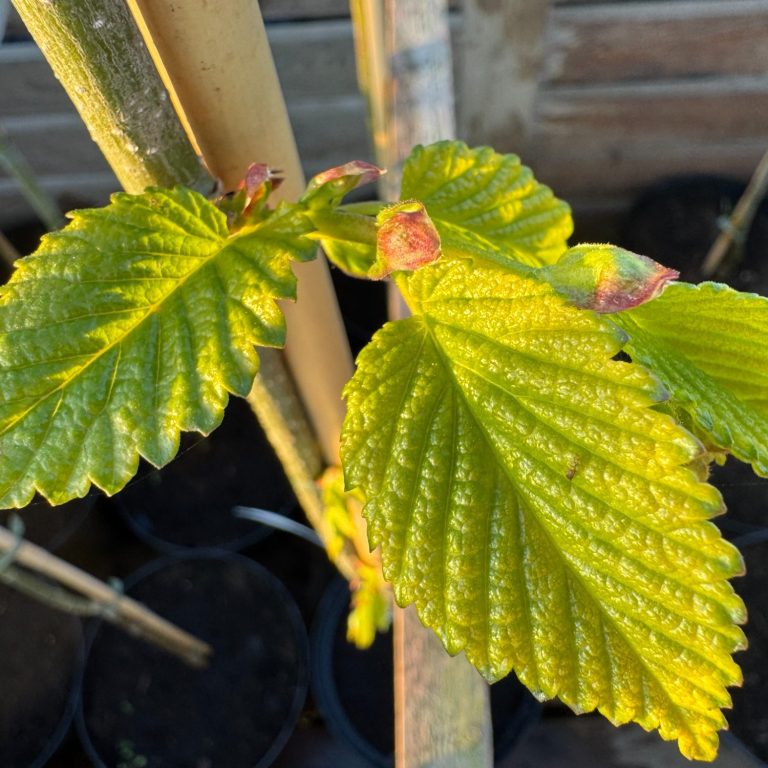
Ulmus
'wingham'
Wingham, named after the village in the UK where it was successfully trialled, is a complex cultivar, combining four species of elm to create a highly resistant cultivar.
Wingham has a less regular folar formation and has been found to grow up to 1.9 meters per year. Wingham excels in fertile soils near river valleys but is less tolerant in clay and chalk soil.

Ulmus 'nanguen' - LUTECE
LUTECE, is a complex cultivar combining four field elms and a selection of frost resistant Asian elms to produce an elm that is deemed to most closely resemble the native European elms.
The stem of Lutece typically forks at a height of 1-2m and the cultivar is quick growing in moist well drained soil. The leaves of Lutece flush fairly late and are not usually seen before mid May.

Ulmus 'wanoux' - vada
Vada, a cultivar which is one quarter Himalayan and three quarters European elm, has been cultivated to be a narrow tree making it highly suitable for street or avenue planting.
Leafing is late but not as late a Lutece. Vada displays high levels of disease resistance and some of the lowest level of wilting during inoculation trials. The Queen's Elm' planted on the main lawn of Holyrood Palace is an Ulmus Vada.
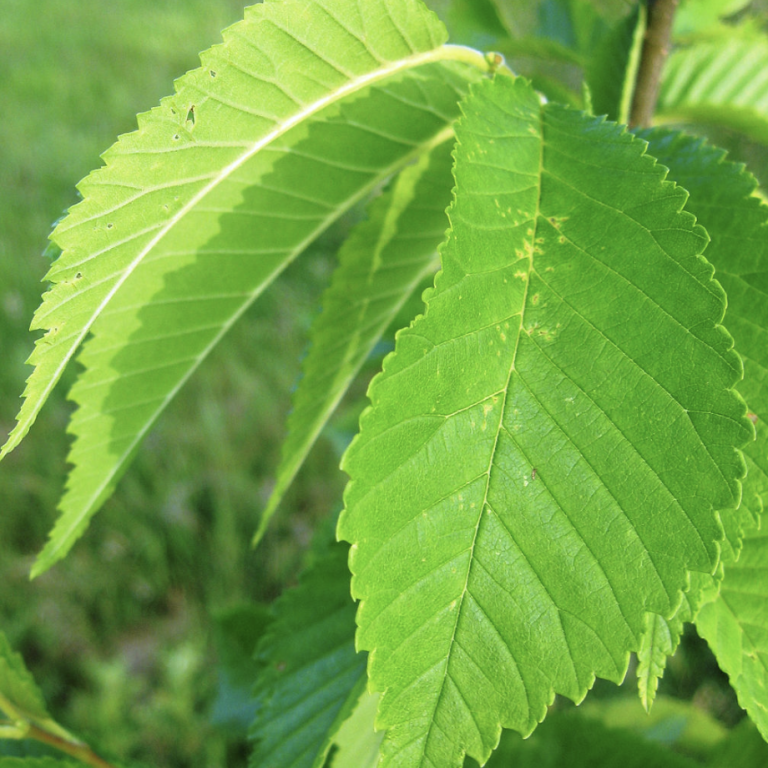
ULMUS x ‘Sapporo Autumn Gold'
Sapporo, a cultivar which crosses Japanese elm with Siberian elm, is one of the most commercially successful hybrid elm cultivars. It possesses a very high resistance to DED.
In favourable conditions of moist well drained soil, a growth rate of 1m/year can be achieved. Although Sapporo does not resemble, in form, a traditional European elm, the white-letter hairstreak butterfly has been found on them.

Passported and monitored trees
All of our elm trees are supplied with a plant passport (PP). PPs ensure that all of our elms are traced throughout the supply chain and declare compliance with plant health requirements to maintain biosecurity over their lifetime.
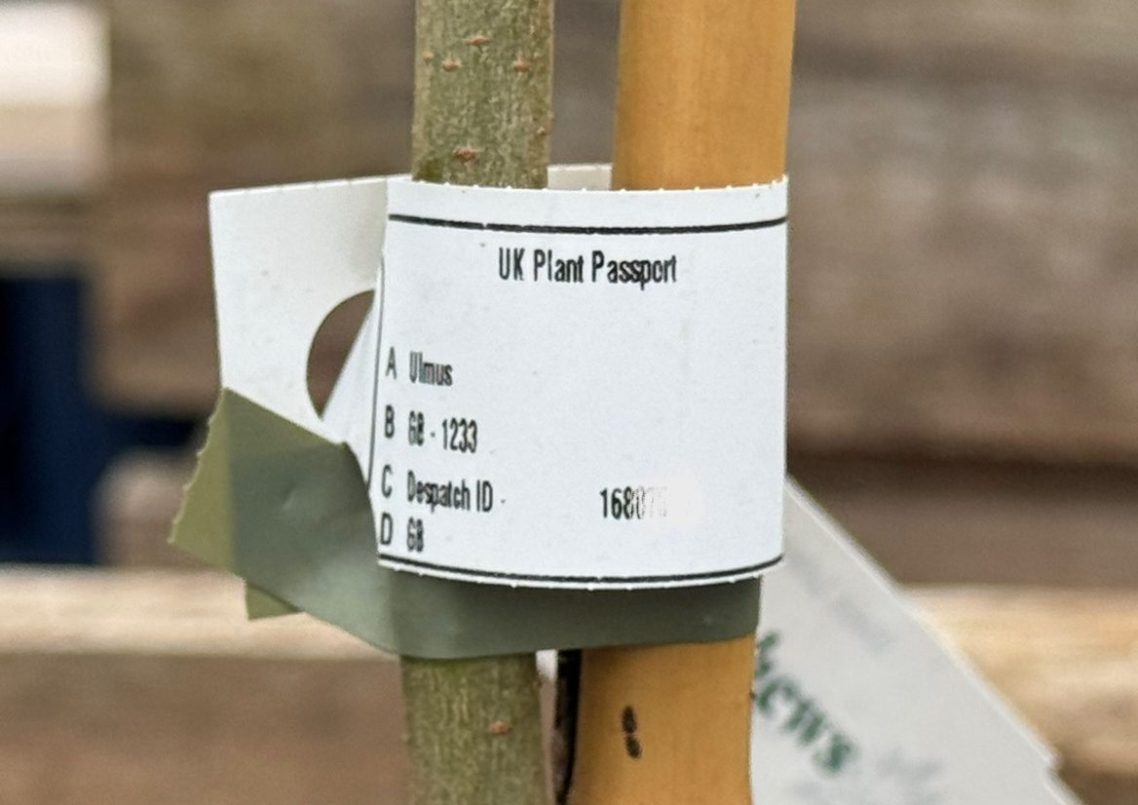
Trees of Special Scientific interest
Our trees not only qualify as disease resistant, their growth will be of special scientific interest during the course of their lifetime.
We are working with a leading university to ensure, once planted, all of our trees are plotted on mapping software PLOT MY TREETM to geolocate each tree and ensure it is identifiable and trackable for years to come.
NORFOLK ELM TREES
email: hello@norfolkelmtrees.co.uk
Telephone: (01379) 420049
FREE DELIVERY THROUGHOUT NORFOLK
Opening hours
Mon - Sat
9:00 am - 6:00 pm
Sun
Closed
We need your consent to load the translations
We use a third-party service to translate the website content that may collect data about your activity. Please review the details in the privacy policy and accept the service to view the translations.
